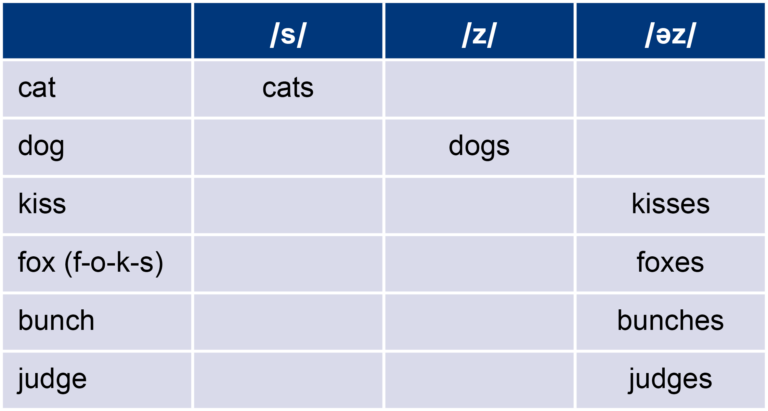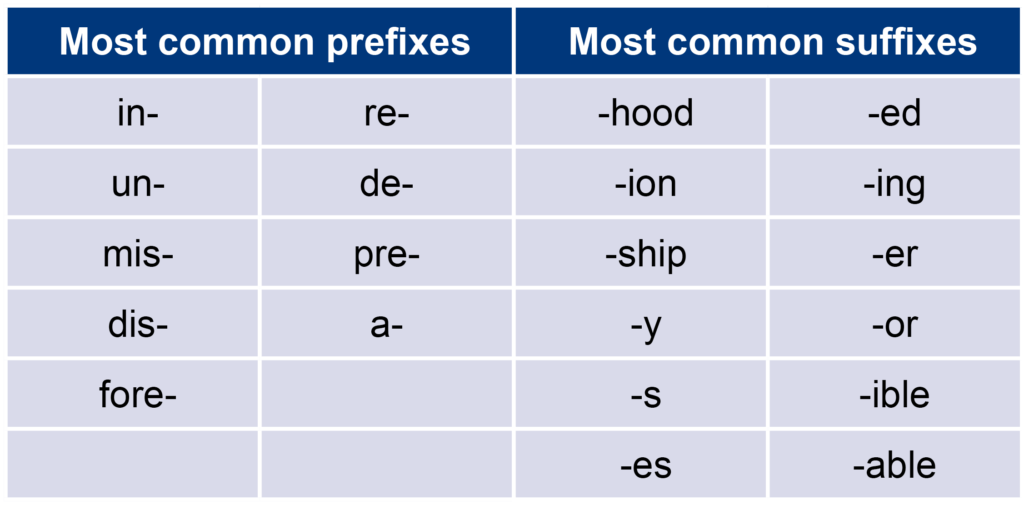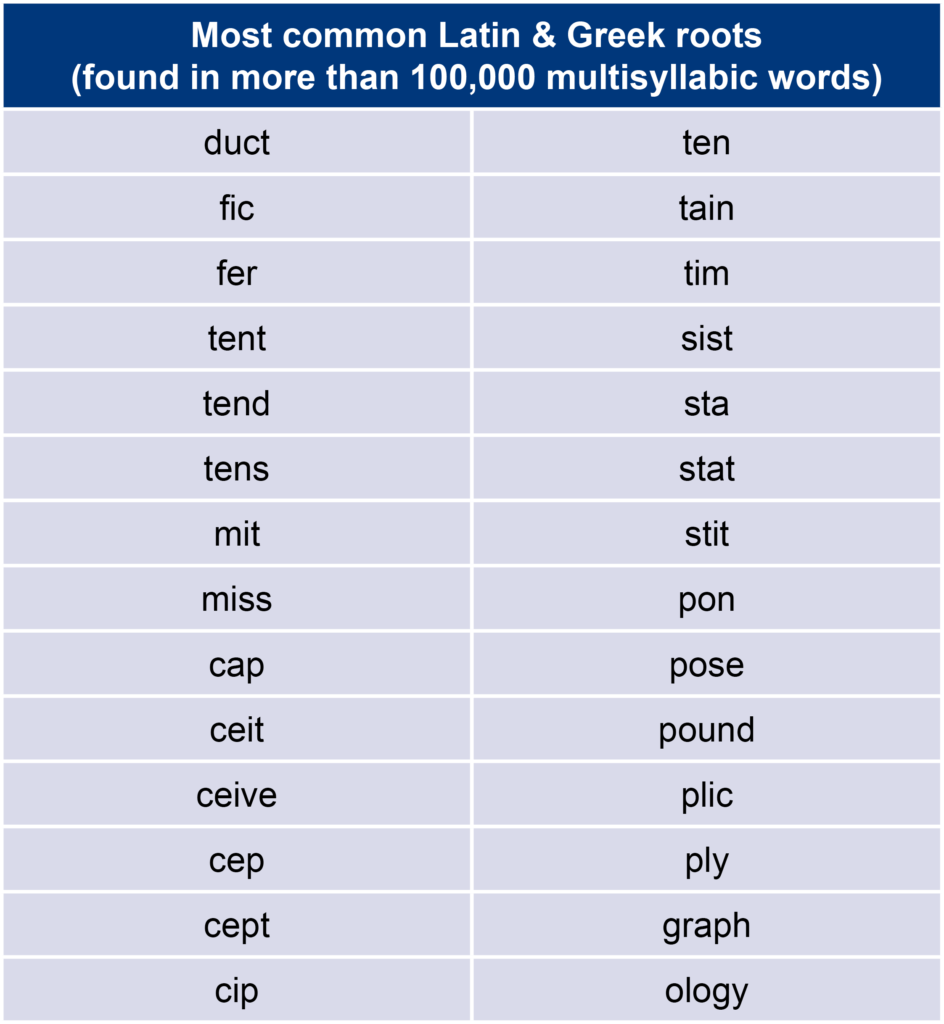Morphemes
What is a morpheme?
A morpheme is the smallest unit of meaning within a word. These units of meaning are spelled consistently even though their pronunciation may change within words, e.g., child/children, heal/healthy. Understanding morphemes is important for understanding reading and spelling. English has a complex writing system that is representative of both sound and meaning.
A morpheme can be a whole word (run), a word part (-ing) or a single letter (-s). Morphemes can be one syllable (eat, church) or more than one syllable (water, carrot, salad), or even a single letter in the case of adding /s/ to indicate plural or third person singular verb eg. waits.
Morphemes include;
- prefixes such as un, re, dis
- suffixes such as s/es, ed, er, ing
- base words such as help, form
- roots such as rupt, port, ject
The word cats has two morphemes, ‘cat’, meaning the furry feline animal, and ‘s’ that denotes the plural.

Why do we need to know about morphemes?
Knowing about and understanding morphemes has the potential to enhance reading, spelling, vocabulary and comprehension. As children progress through the years at school they will encounter thousands of unfamiliar words. Understanding morphemes gives them another key to independently work out both the meaning and the pronunciation of those words, effectively unlocking the power of print.
Children become proficient at using morphemes in their speech early on and this will be reflected in their attempts at writing. For example, a child wants to write about dogs, we often see this spelled in early writing attempts as ‘dogz’. This occurs because this is how the word is pronounced phonetically. Children will often spell phonetically until they become aware of morphemes.
Explicit teaching of morphemes
Children can benefit from learning about morphology in the early years of school (Bowers, Kirby, & Deacon, 2010). For example, explicit teaching of morphology during a phonics lesson will ensure students understand that when we mean more than one, it is always spelled using the letter s even though we often hear the phoneme /z/.
There is no common scope and sequence for introduction of morphemes. Some schools introduce simple morphemes, such as s/es & ed in prep/kindergarten, some schools don’t introduce it until Year 1 or 2, or even later.
Understanding the use and function of morphemes in reading and spelling should occur as an addition to systematic phonics instruction. It can be introduced early and simply once children begin to be able to write simple CVC words, such as cat and pet, because these words can be easily turned into plurals.
Morphology can then increase in complexity all the way through the grades into high school and contributes to understanding of academic language used in subjects like literature, maths and science.
There is no compelling evidence at present that [morphology] should replace systematic phonics instruction in the first stages of learning to read, although it may be beneficial at later points in reading acquisition (Rastle, 2019).
There is evidence that explicitly teaching students the patterns for morphemes allows them to read and spell more effectively (Goodwin & Anh, 2013). It is helpful to know that plurals can be represented by /s/, /z/, and /əz/. Note that /əz/ is the only plural that forms a new syllable.
This is where we can begin to appreciate the importance of correctly teaching students about voiced and unvoiced phonemes, as we outlined on our ‘teaching grapheme-phoneme correspondences’ page, because it makes spelling easier.
Table 1 shows that a base word ending in a voiced phoneme has a plural that is voiced /z/. A base word ending in a voiceless phoneme has an unvoiced plural /s/. The syllable /əz/ is added when the base word ends in one of six consonants /s/, /z/, /sh/, /ch/, /zh/ or /j/.
Table 1 – plural
Note: Where we use // around a letter we are representing the phoneme or speech sound. Not everybody is familiar with International Phonetic Alphabet transcription so for simplicity we have used the easy-to-use notation for units of sounds on this page.
Understanding voiced and unvoiced phonemes is important for spelling the very common -ed suffix denoting past tense. This suffix can be pronounced in three ways /əd/, /d/, and /t/ but it is always spelled with the letters –ed (see Table 2)
Table 2 – past tense
Again, when the base word ends in a voiced sound, the -ed will be voiced (sailed = /d/), when it is unvoiced the –ed will be unvoiced (fished – /t/) and when the base word ends in /t/ or /d/ the –ed becomes a syllable (rented = /əd/, mended = /əd/).
A child with weak phonemic awareness may struggle to isolate the final phoneme in these words s-ai-l, f-i-sh, r-e-n-t. This highlights the importance of phonemic awareness in reading and spelling and how it can impede an individual’s reading and spelling development.
How morphology supports learning
Students should be taught about prefixes, suffixes, roots, and base words because it will help them to understand the words they will encounter in upper grades, words such as predict (pre=before & dict = say or tell), kilometre (kilo = 1000 & metre = unit of length) or biography (bio = life & graphy = process of writing or recording). (Deacon, Kiefer & Laroche, 2014).
To find out about the meanings of prefixes, suffixes, roots and more you can visit the Online Etymology Dictionary which is described as “a map of the wheel-ruts of modern English. Etymologies are not definitions; they’re explanations of what our words meant and how they sounded 600 or 2,000 years ago“.
Table 3 – common prefixes and suffixes
Table 3 contains the most common prefixes and suffixes that are the most functional to teach, and Table 4 contains the most common Latin and Greek roots. Structured Word Inquiry (Bowers & Kirby 2010) is a valuable method of learning about the meaning of words and how they are constructed. This type of instruction explicitly targets any features and conventions that govern a word’s structure, and importantly, the inquiry is very deliberately and purposefully structured by the teacher.
Structured Word Inquiry utilises word families, word webs, word matrices and word sums to help students learn about how words work.
More about this can be learned from teacher Lyn Anderson’s website where she reflects on introducing morphology to young children and how she teaches morphology using these tools.
Lists of common prefixes and suffixes can be found here and here.
Table 4 – Common Latin and Greek Roots
Basic word matrix explaining go and do. Source Pete Bowers 2007





